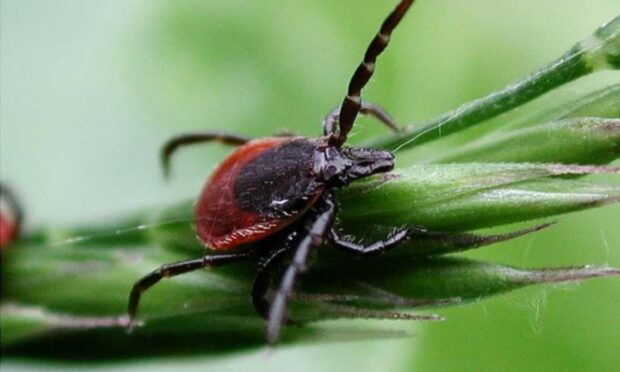After years of gathering data on tick-borne diseases in Uist, University of Glasgow researchers ar econsidering their next steps.
As the weather warms up, ticks are biting more and more people in Scotland.
Every tick bite carries the risk of Lyme disease. But, statistically, people in Uist face higher rates of Lyme than anywhere else in Scotland.
For University of Glasgow researchers, this year’s tick season is an important one.
Professor Roman Biek and Dr Caroline Millins have been studying tick-borne diseases in Uist since 2018.
Now, they’re taking their findings to the community, to work with local people on a way forward.
‘Focus groups and questionnaires’
Dr Millins says they’re working to understand “which types of interventions to try and reduce the risk from tick-borne diseases would be acceptable to a wide, diverse range of the community – crofters, landowners, and land managers.”
“We’ve collected quite a lot of data from focus groups and questionnaires,” says Dr Millins.
“We’re in the process of analysing that and producing a report to think about the next steps.”
The researchers began their work in the Western Isles after the NHS raised the alarm over the high number of Lyme disease cases in the area.
‘Study what’s going on’
“We attended a Lyme disease meeting in 2017,” Prof. Biek says. “And Isabell MacInnes from NHS Western Isles gave a presentation there.”
“Within her presentation she said, ‘we don’t have the expertise to study the ticks in the environment. We can document the human cases we see, but we can’t really study what’s going on.'”
“And that’s how it all got started,” he says.
Over the last five years they have carefully mapped the distribution of ticks over Uist, along with how many of them contain the bacteria that causes Lyme disease.
Their research shows that deer and rats are particularly important hosts for the ticks.
A total deer cull in South Uist was rejected by a community meeting earlier this year. But, Dr Millins says, there are other options.
“If you can restrict deer from certain areas, whether that’s gardens or larger areas, that might have an effect in reducing tick populations.”
Rat populations could also be focused on, she says, along with different treatment options for sheep and pets.
Ticks closer than ever to Uist’s ‘homes, crofts, and gardens’
For local people in Uist, research into these possible interventions is more important than ever.
Surveys the researchers carried out show people in the Western Isles are seeing more ticks than ever – closer to “people’s homes, crofts, and gardens”.
“We can’t point to any quantitative data on tick numbers because we haven’t been studying them for long enough,” says Dr Millins. “But definitely from people’s lived experiences in the Western Isles, it seems to be that numbers are increasing.”
More local reporting from the Western Isles:
- ‘Empower people locally’: Safety campaign for Western Isles women nominated for Scottish charity award
- ‘Voice of the landscape’: Local stories and worldwide inspiration take centre stage at Hebrides International Film Festival
- Feral on an uninhabited island, some dying from starvation: Uist campaigners bring St Kilda sheep concerns to Parliament


Conversation